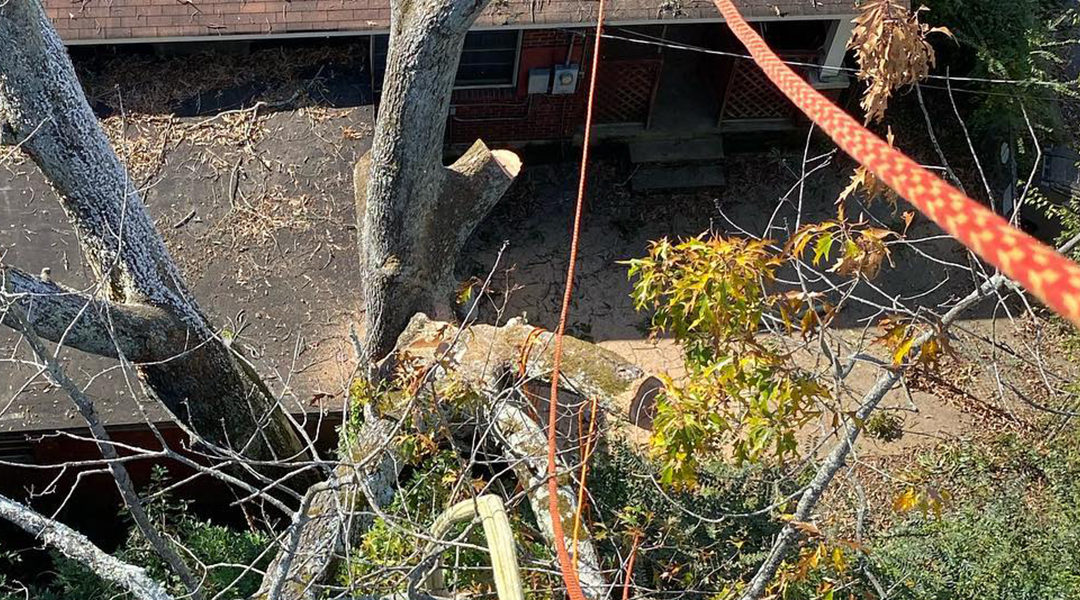When spring rolls around, you’re expecting to see your trees in full bloom. So, what do you do if all that new growth looks like someone took a torch to it? Are the branches and twigs shriveling and curling? You might be looking at a bacterial disease that affects trees called fire blight.
If you think your trees are affected by fire blight, it’s crucial to get a diagnosis quickly. Tree service in Benton by Urban Jacks can help you diagnose and treat fire blight symptoms before they get out of hand.
What Is Fire Blight?
A plant disease caused by blight bacteria, fire blight, gets its name because of the burnt look on the tree’s new growth. Influenced by seasonal weather, the condition usually appears when trees or bushes begin their new growth. The bacteria typically target the plants’ blossoms first, then twigs and branches.
Fire blight causes the most damage in the spring or summer when there is warm, rainy, or humid weather. Unfortunately, there is no cure for fire blight. Once a tree has a blight infection, the most you can do is treat the condition and attempt to prevent it from spreading.
What Are Fire Blight Symptoms?
Unfortunately, symptoms usually aren’t noticed until new growth appears. So, you won’t know you have infected trees until well after the fact. Aside from the telltale scorched look of the leaves, there are a few other ways to tell if your trees have fire blight.
Fire Blight Symptoms
Below are some fire blight signs to look out for:
- Wilting or shriveled twigs
- Fruit or flowers that turn brown or decay
- Weeping wounds in the tree trunk
- Cankers (discolored patches that ooze)
If your tree has cankers, then it’s probably too late for treatments to be effective. At this point, it may be wise to remove the tree if you are risking infecting nearby trees. However, if you’re only noticing infected branches and scorched leaves, you may be able to save your tree.
How Is Fire Blight Spread?
There are many ways you can spread fire blight bacteria. Rainfall and spray irrigation are two common ways it spreads because the water splashes the bacteria from one tree to the next. If the weather is windy, all the trees in the immediate area are at risk for infection.
Other ways a blight infection can spread are:
- Insect damaged leaves/twigs
- Pruning cuts (not disinfecting the blades between uses)
- Pollinators (bees or similar insects that carry the bacteria from one flower to the next)
- Fallen fruits or flowers that are infected
A tree with cankers is more likely to spread the bacterial infection. One canker can produce millions of blight bacteria, spreading quickly to nearby trees. Fruit trees such as those that produce apples, peaches, cherries, plums, and raspberries are more likely to be infected than other trees.
Can Fire Blight Bacteria Be Treated?
Once you have an official diagnosis of fire blight, you can start determining your next course of action. If the infection is in its early stages, you can likely save your tree with regular pruning. By removing infected branches and plant tissue, you can prevent the disease from spreading. However, be sure to sanitize your pruning tools after each use, or you’ll end up spreading the bacteria anyway.
The goal is always to preserve your tree rather than remove it, so pruning is usually the first of two options. The second way to treat fire blight is to spray something called bactericides, which prevent the bacteria from spreading.
If you are looking for a way to treat fire blight symptoms, pruning is usually the first step after diagnosing the problem. Call us today to learn more about tree trimming and pruning services by Urban Jacks.

